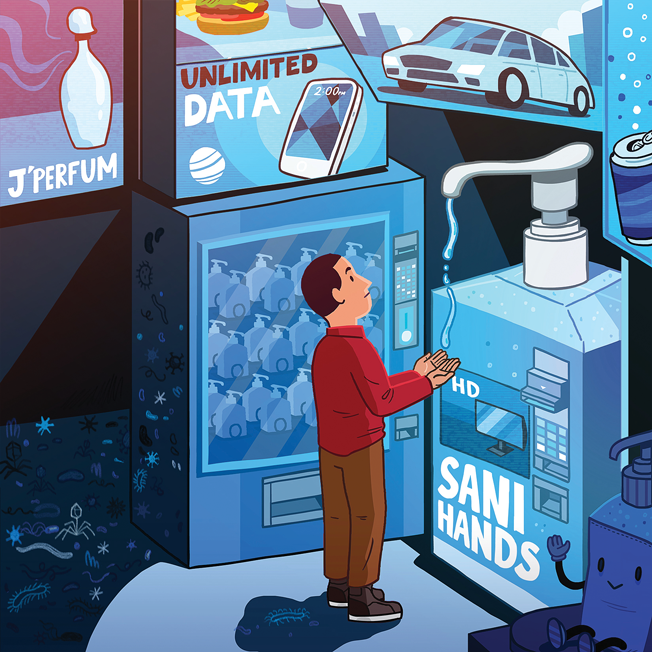Sales of hand sanitizer surged during the Ebola scare, increasing about 56 percent in October 2014 over the previous year, according to data from IRI, a market research firm. But before shoppers turned to the soap aisle for Purell, many got a squirt of foam from one in-store dispenser and plucked a sanitizing wipe from another to clean shopping cart handles.
Photo: Terraboost Media
For Terraboost Media, which since 2009 has placed dispensers with poster-size advertisements in businesses, usage of its units increased by as much as 650 percent in the four weeks ending Oct. 15, 2014. The company has doubled its size in the last 19 months, to a total of 54,000 dispensers/billboards, which are seen an estimated 2.5 billion times monthly. Locations include retailers like Safeway, Bed Bath & Beyond and Rite Aid, while 716 malls and 110 airports feature them in common areas.
Six years ago the company first placed 500 units in New York, mostly at bodegas and sandwich shops, and with free ads for nonprofits. Rapid expansion is the result not just of securing more locations, but also adding units to existing ones. Where a couple dispensers at a supermarket entrance once sufficed, today typically there are five for consumers who feel schmutzy in produce, deli and pharmacy departments.
"At first we thought, let's just be at the front doors because we're going to catch 100 percent of the shoppers," said Brian Morrison, who co-founded the company with his brother, Brett. "A lower percentage of people may be going to the pharmacy, but the dwell time"—how long the shoppers see the ads—"is so much better there."
Among Americans, 43 percent regularly use hand sanitizer, with 50 percent of 18- to 24-year-olds doing so, according to Mintel, a market research firm.
When it comes to how Terraboost structures deals with retailers, one hand, appropriately enough, washes the other. Retailers typically pay Terraboost about half the market rate for sanitizer and wipes, and earn a percentage of the ad revenue for units in their stores.
Palms up in a gesture of supplication and awaiting the automated squirt, consumers have little choice but to study the eye-level ads. While a variety of brands, including Geico, Metro PCS and Tropicana, have advertised on the kiosks, more than half are health-related, like hospitals and health insurers.
Sheena Robinson, a senior media planner with the Intermark Group in Birmingham, Ala., says one agency client, a health insurer, buys ads on the dispensers in Winn-Dixie supermarkets and other retailers throughout the state. Many consumers assume the insurer (which declined to be named) installed the dispensers on its own volition.
"Consumers say, 'Thanks for bringing these to the stores,'" Robinson said, referring to comments to the advertiser. "What I like about this is you're giving the user something."
Hand sanitizer also is booming as a promotional tchotchke. To help market the Connecticut health insurance exchange, for example, Access Health CT hands out sanitizer emblazoned with its logo.
At Motivators.com, which sells branded promotional products, sales of hand sanitizer gels and sprays have experienced "tremendous growth" in the last five years and consistently are in the top 10 of the more than 50 categories of items it sells, according to Rachel Levin, director of sales and marketing at Motivators Inc.








